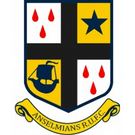Booking your test
You can book your driving test when you’ve passed your theory test.
You do not need to pass another theory test if you’re upgrading an automatic car licence to a manual licence.
To pass the driving test you must be able to:
Drive safely in different road and traffic conditions,
show that you know The Highway Code by the way you drive.
The national standard for driving cars tells you everything you must be able to do to pass the test. Only take your test when you can do everything without instruction.
There’s no minimum number of lessons you must have done before you book and take your test.
Change or check your test details
You can change the date of your test after you’ve booked.
You can check the details if you’ve lost the email confirmation you were sent when you booked your test.
Rebook your test
Rebook your driving test if you failed your test and want to resit it. You have to choose a date at least 10 working days away.
What happens during the test
There are 5 parts to the driving test:
an eyesight check,
‘show me, tell me’ vehicle safety questions
general driving ability,
reversing your vehicle,
independent driving.
The test is the same for both manual and automatic cars.
How long the test lasts
You’ll drive for around 40 minutes.
You’ll drive for around 70 minutes if you’re taking an extended driving test because you’ve been banned from driving.
Eyesight check
You’ll have to read a number plate from a distance of:
20 metres for vehicles with a new-style number plate
20.5 metres for vehicles with an old-style number plate
New-style number plates start with 2 letters followed by 2 numbers, such as AB51 ABC.
You’ll fail your driving test if you fail the eyesight check. The test will end.
Your general driving ability
You’ll drive in various road and traffic conditions, but not on motorways.
The examiner will give you directions that you should follow. Driving test routes are not published, so you cannot check them before your test.
Pulling over at the side of the road
You’ll be asked to pull over and pull away during your test, including:
normal stops at the side of the road
pulling out from behind a parked vehicle
a hill start
You might also be asked to carry out an emergency stop.
Reversing your vehicle
The examiner will ask you to do one of the following exercises:
parallel park at the side of the road
park in a parking bay - either by driving in and reversing out, or reversing in and driving out (the examiner will tell you which you have to do)
pull up on the right-hand side of the road, reverse for around 2 car lengths, and rejoin the traffic.
Independent driving
You’ll have to drive for about 20 minutes by following either:
directions from a sat nav
traffic signs
The examiner will tell you which you have to follow.
They’ll set the sat nav up for you. You can’t use your own sat nav.
If you can’t see traffic signs
If you can’t see a traffic sign (for example, because it’s covered by trees), the examiner will give you directions until you can see the next one.
Going off the route
The examiner won’t give you a fault for taking a wrong turning.
They’ll help you get back on the route if you do.
If you make mistakes during your test
You can carry on if you make a mistake. It might not affect your test result if it’s not serious.
The examiner will only stop your test if they think your driving is a danger to other road users.
Driving test faults and your result
There are 3 types of faults you can make:
A dangerous fault - this involves actual danger to you, the examiner, the public or property.
A serious fault - something potentially dangerous.
A driving fault - this isn’t potentially dangerous, but if you keep making the same fault, it could become a serious fault
Pass mark
You’ll pass your driving test if you make:
no more than 15 driving faults (sometimes called ‘minors’)
no serious or dangerous faults (sometimes called ‘majors’)
If you pass your test
The examiner will:
Tell you what faults you made, if any
give you a pass certificate
ask you if you want your full licence to be sent to you automatically - give the examiner your provisional licence if you want to do this,
Apply for your full driving licence within 2 years of passing your test if you don’t want to get your licence automatically.
When you can start driving
You can start driving straight away when you’ve passed your test. You do not need to wait for your full licence to arrive.
Contact DVLA if your full licence hasn’t arrived 3 weeks after you applied for it.
If you do not pass
The examiner will tell you what faults you made.
You have to book another test and pay again. You have to choose a date at least 10 working days away.







